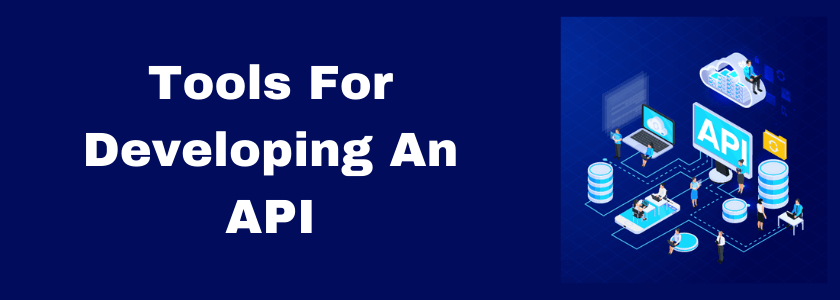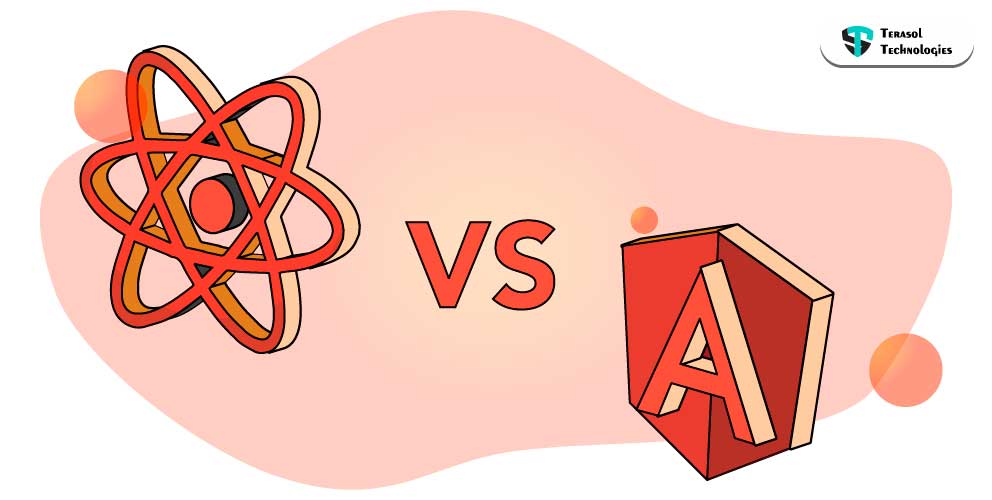If you work in the computer business or are a tech nerd, you've probably heard of the term "API". API development is now more important in the economy than it has ever been. APIs are everywhere, and is used by leading web app development companies in their development process.
We use API for a variety of things in our daily lives, like booking tickets, logging into Facebook, and making PayPal purchases.
If you're going to include API development in your business software, you'll need to be well-versed in the subject. Not only should you understand how it works, but you should also understand the development process and the features that must be included in API development.
Table Of Contents:
2. Categories of API Development
5. Terminology for API Development
6. Tools for Developing an API
7. Features that Come With an Exceptional API
9. Does Every Business Need an API?
What is API Development?
API (Application Programming Interface) is a set of instructions, requirements, and standards that allow one software and app to make use of features or services from another app, device, or platform to provide better services. This makes it essential for Custom Mobile App Development Services for creating unique solutions.
In technical terms, it's a set of programming codes that permits data to be transferred from one software application to another.
For example, Type coffee in google maps and it shows you neighboring coffee shops, specialty shops, and whatever else is in close proximity to your current location.
The Google Maps API allows consumers access to a practically unlimited amount of geographic knowledge.
So yes we've used this API sample more than we think.
The Google Maps API was in operation every time you saw business hours, ratings, contact information, or anything else from that handy box on your screen.
Different types of APIs are used by developers. Some of them are:
- Web service APIs
- Library-based APIs
- WebSocket APIs
- Class-based APIs
- Object remoting APIs
- Hardware APIs, and many more.
Why Build an API?
APIs are really useful since they enable developers to take someone else's work and use it to create their app or product, but why do API creators do it?
Giving out a firm's data or services through an API may appear to aid one's competition, but when done correctly, one can build an API and allow their company to expand into places one has never imagined.

APIs help us in a variety of ways. Let's see some of the ways here:
Financial Institutions: Private APIs are used by financial institutions such as banks to track and manage checking accounts, credit cards, and other financial accounts.
Reatail stores: APIs are used by retail behemoths to communicate with courier networks, ensuring that shipments are picked up as quickly as possible and that they are tracked as they move.
Networking sites like Twitter: Allowing Users to Build their Ecosystem. Twitter began by putting a strong emphasis on its API. Developers could acquire practically any data they wanted from Twitter, including trends, hashtags, and user statistics, and they used it to create some fascinating stuff.
Streaming service: APIs are used to deliver content through streaming services like Spotify and Netflix.
Automobile technology: Tesla, for example, uses APIs to provide software upgrades. Others employ APIs to provide third-parties access to automobile data.
All apps that deal with data or enable communication between two goods or services use an API as their foundation. It allows a mobile app or platform to share data with other apps or platforms to improve the user experience without the need for developers.
On top of that, APIs reduce the necessity to create similar apps or platforms from the ground up. Because of these characteristics, API development is a priority for both app developers and business leaders.
Categories Of API Development
API development is categorized into four groups:

Open API or Public API:
Public APIs can also be identified as external or developer-facing. This type of API is open to the public and gives developers programmatic access to a proprietary software application or web service. You can use the public API program to raise brand awareness.
Public APIs can also be divided into two categories: open and commercial.
Private APIs or Internal APIs:
Private APIs are not accessible to external users and are designed to be shared among internal development teams to improve productivity and service use. The interfaces of this application software are intended to improve the organization's offerings and solutions. These APIs can be used by both contractors and in-house developers to create new solutions.
Partner APIs:
Such APIs are not open to the Public like Open APIs. For software integration between two parties, partner APIs are employed. To use these APIs, a corporation or developer must have special authorization. To acquire access to partner APIs, there is an onboarding process with a specific authentication workflow. These are also widely publicized and shared with commercial partners that have an agreement to work with the publisher. By providing partners with capabilities benefits and data access, a corporation can generate additional revenue streams.
Composite APIs:
These are APIs that integrate multiple services and data APIs. They're made by merging existing API functions that can do numerous things in one call. It improves the performance of listeners in web interfaces by speeding up the execution process.
Innovating with APIs
Making your APIs available to partners or the general public might help you:
- Create new revenue streams or expand existing ones.
- Increase the number of people who know about your company.
- Facilitate open innovation or increased efficiency by collaborating and developing externally.
Isn't that fantastic? But how can APIs accomplish all of this?
Sharing APIs with a restricted group of partners or the entire world can be beneficial. Each relationship raises your company's brand awareness beyond its marketing efforts. By making technology available to everyone, such as using a public API, you can encourage developers to create an ecosystem of apps that revolve around your API.
The more people who use your technology, the more inclined they are to do business with you. Partner and public APIs allow you to tap into the creative energies of a bigger community than your development team.
New ideas can come from anyone, and businesses must be aware of market changes and prepared to act on them.
Working of API?

Let's look at an example to better understand how the API works. Assume you've gone to the ABC website or app to reserve a hotel room.
You completed the form by providing all the information, such as the number of days you wish to stay, the city, the check-in date, and other information required.
As soon as you submit, a list of hotels with information such as room availability, price, and other details will show.
But how did it happen in the first place?
This is possible because these websites or apps have APIs.
To give such precise data, the platform requests the website, which then uses API to access the database and retrieve all essential data. The website then responds with the data that was sent to the platform via API.
The API serves as an intermediary, in this case, streamlining the data transfer procedure. The website and hotel booking platform, on the other hand, serve as endpoints. When it comes to communication endpoints, APIs work in two different ways: SOAP and REST.
REST APIs Vs SOAP APIs
In general, developers favor RESTful architecture for web services APIs, while SOAP API is preferred for enterprise apps that require high-level security and greater resources.
|
Difference |
REST API |
SOAP API |
|
Function |
Data-Driven |
Function Driven |
|
Data Format |
Uses HTML, XML, JSON and more |
Uses XML only |
|
Bandwidth |
It is lightweight and requires lesser resources. |
Needs more bandwidth and resources |
|
Security |
SSL & HTTPS |
WS- Security & SSL |
|
Data Cache |
It Can be Cached. |
It Cannot be Cached. |
|
Payload Handling |
No prior understanding of the API is required. |
Has rigid communication & requires attention to detail prior to communicating. |
Let's see the terminology of API development to know these better.
Terminology of API development
If you want to design or develop a custom API, you should be familiar with the terms listed below.
1. API Key- When an API checks a request through a parameter and understands the requester, it is referred to as an API key. An API KEY is the permitted code that is given to the request key.
2. Endpoint- An endpoint is the one end of a communication channel when an API from one system interacts with another system.
3. JSON (JavaScript Object Notion)- It is a data format used by APIs to exchange data over the internet between two different applications.
4. GET– The GET method is widely used in APIs and web pages. It's a technique for retrieving data from a server at the supplied location.
5. POST– To update or create a resource, this method is used to send data to the API server.
6. OAuth- It's essentially an open standard authorization system that allows users to gain access without having to share their credentials directly.
7. REST- The acronym stands for representational state transfer. This is a type of API programming framework developed to improve the efficiency of device/system communication. The goal of developing this framework was to provide a faster, less time-consuming approach to connecting.
8. SOAP: Simple Object Access Protocol, is a communications protocol used in computer networks to share structured information during the execution of web services.
9. Latency- It's the overall amount of time it takes for an API to evolve from request to response.
10. Rate-limiting- This strategy is a way of describing how quickly end-users can access APIs. To put it another way, it restricts the total amount of requests that any end-user can make in a certain period.
11. API throttling- It refers to restricting end-users access to APIs for a set period.
 Tools For Developing An API
Tools For Developing An API
API development is done using a variety of tools and technologies. Here are a few prominent developer tools and packages for API development.
Apigee: Apigee is a Google API management service that helps developers and entrepreneurs succeed at digital transformation by re-establishing an API Integration strategy.
APIMactic & API Transformer: They provide powerful, easy-to-use automatic creation tools so that developers may quickly create high-quality SDKs that meet specific requirements.
API science: This tool is used to assess both internal and external API performance.
GitHub: This open-source git repository hosting service allows developers to manage distributed code files, pull requests, version control, and commenting. It also provided them with the ability to save their code in private repositories.
Postman: It's essentially an API toolchain that allows developers to execute, test, document, and assess their API's performance.
API Serverless Architecture: These technologies use a cloud-based server infrastructure to help mobile app developers design, construct, publish, and host APIs.
Dredd: It's a popular tool for comparing API documentation produced in API Blueprint to the backend implementation.
Restlet Studio: It is a web-based IDE for creating APIs.
Sandbox: It generates a fake RESTful API from API definitions simply and quickly.
Reunited: Create SDK, documentation, and test and debug code.
Swagger: Swagger is an open-source platform for designing APIs. Top technological companies like Apigee, Getty Images, Microsoft, and PayPal use this product.
OpenAPI Spec Tooling: This package contains a collection of frameworks and libraries that support the OpenAPI ecosystem.
SoapUI: It's an open-source testing tool. It can run on a variety of systems and automate both functional and non-functional testing. It's commonly used to do Web API compliance, regression, security, and load tests.
Yes, we know all the major API terminologies, but what more can an API do? What are API features?
Features that Come With an Exceptional API
API has a lot of capabilities. Some aspects, though, are difficult to overlook. It's almost as if you can't disregard these features while developing or creating an API.
Modification: For a better user interface and user engagement, an API should allow users to search data based on parameters such as date, location, and time.
Sorting: Ensuring that the user receives the data one by one, or sorting the data according to the user's needs, modifications, and conditions.
Paging: The API must be able to determine how much data should be displayed and how often it should be displayed. As a result, the user may choose what data they want to see and how much of it they want to see.
Authorization via OAuth: Your application program interface must authorize via OAuth once again because it is faster than other methods - all you have to do is click a button and it's done.
Testing: API testing entails both direct testing of APIs and integration testing to see whether they meet performance, functionality, security, and reliability requirements. JMeter, Postman, and SoapUI are some of the most often used API testing tools.
JSON Support/ REST: Though it is not required, it is beneficial to consider your API to be RESTful (or to have JSON support(REST)) for effective API development. The syntax of JSON is similar to that of most programming languages, making it simple for a mobile app developer to parse it into another language.
Validation: Validation in APIs is the process of ensuring that data is valid. Validation can be divided into two categories: server validation and client-end validation.
Error handling: By determining whether the problem is caused by a client or server fault, good error handling can make debugging easier. The customer can alter the request for some issues, but for others, they must contact assistance.
Cache: Creating a cache strategy allows users to retrieve resources at lightning speed. The cost of your requests will decrease once your data is ready to be consumed in an in-memory database. You can do this with tools like Memcached and Redis.
A few other important features to keep in mind while developing any API design are Cache, Wrappers, Error handling, and HateOAS.
Top Practices to Build an API
Above, we looked at the API's must-have features as well as the top tools for creating APIs for mobile apps and online apps. All of this, however, will be for naught if you don't follow the best API development principles. There are numerous methods for API development.
1. Throttling:
App throttling is the ideal technique to consider when it comes to redirecting overflow traffic, protecting against DoS (Denial of Service), and backing up APIs.
2. Enable overriding HTTP method:
Some proxies only support the POST and GET methods, which is why your RESTful API must be able to override the HTTP method. You can do this by using the X-HTTP-Method-Override custom HTTP header.
3. Consider your API gateway as an Enforcer:
The API gateway must be regarded as the enforcement point when setting up throttling rules, using API keys, or using OAuth. It should be regarded as a security feature that restricts data access to just authorized users. It should allow you to encrypt messages or change secret data, allowing you to track and govern how your API is used.
4. Documentation:
It is beneficial to build thorough documentation for a mobile app API so that other mobile app developers can quickly understand the process and use the knowledge to provide a better user experience. In other words, proper API documentation will save project implementation time, cost, and improve API technology efficiency in the process of successful API development.
5. Security:
You must ensure that your API development is safe without sacrificing usability. If a user takes more than 5 minutes to authenticate, your API is not user-friendly. Token-based authentication can be used to safeguard your API.
6. Integrations:
The greater the number of integrations, the better. Integrate your APIs with third-party technologies/APIs so that they can collaborate if necessary. It will help you build a more robust platform by allowing your API to perform more.
Integrations using open-source libraries or enterprise service buses, such as Apache Camel, MuleSoft, and others, would make integration easier and minimize time-to-market.
So, now we know how to effectively use APIs, but how much API development actually costs?
Let's See The Cost of API Development
Building a simple API costs around $20,000- $25,000 on average. This figure assumes you're working with an expert API software developer from a reputable API development business firm to create a safe, well-documented, fully functional API.
Does Every Business Need an API?
Many companies have had excellent success developing APIs that customers or other third parties can use, but you don't have to have one if you're starting a software company. The complexity of providing an API in addition to a user interface may be too much for a small business, but it's still important to know when and why an API is necessary.
Here is a list of reasons why you should or should not implement an API. While this list is not exhaustive, it should serve as a starting point for determining whether or not an API is appropriate for your application.

Conclusion
It's safe to assume that APIs have become increasingly important not just in terms of software development but also in terms of business communication. APIs have been shown to increase business earnings by facilitating technology connectivity. You can also create and integrate the necessary API for your company with our software development company.
Now you know everything about APIs, so are you interested in API development? If that's the case, get in touch with our API development experts. They will take you through the full process and help in developing a secure API.


